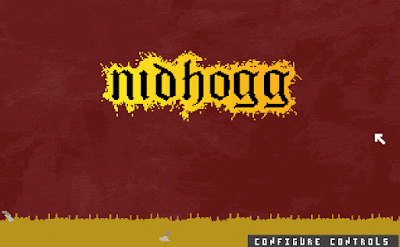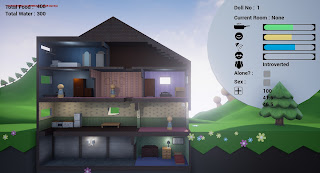By their very nature, hotels are designed to teem with life but
when business dips and owners can no longer afford to keep the
doors open, the building’s inviting atmosphere dissipates.
Lobbies once choked with people become yawning and shadowy.
Wandering down hallways with darkened rooms flanking either
side becomes an exercise in courage. In these places, the mind
plays tricks, inventing footfalls, laughter, and snippets of music
from a bygone age
- or perhaps some guests really do never
leave.
My first task of the year is to create an atmospheric hallway with this description. As a games designer/ indie developer my goal is to make what is essentially quite a small area into something interesting to traverse despite limited traversal options. To do that I'll be guiding the player using audio, lighting, level geometry, and I'll be looking for interesting ways to reuse the same space. Where possible I'll be using lots of tricks to keep the player on their toes and to imply some kind of narrative.
Thematically I liked the idea of the 'infinite hotel' also known as 'Hilbert's Paradox of the Grand Hotel', which is an infinitely large fictional hotel used as an aid in describing the notion of infinity. I figured a hotel of infinite size would have it's own ecosystem, transport, leisurely spaces and due to it's infinite size would also contain entire fields, cities, continents, and planets. Which is why I think I've concluded that it's actually quite a bad theme for this hotel; it has no direction.
But I do like the idea of an impossibility space. Corridors that link back to themselves, architecture that makes no real sense, walls that shift and change shape. It also got me thinking about a game called
Bernband by Indie developer
Tom Van Den Boogart. A large part of this project is the atmosphere and in Bernband, the real atmosphere comes from the feeling of existing in a real world. The Bars scattered around, the sound of people making their daily commutes, and the quiet spaces away from all the noise.
For my hallway I can't have people walking around as it goes directly against the brief, but I can certainly trick the player by playing audio of what once was there, and make them feel like they're living in a real space by building it as if people really did live here.
Here are a few initial ideas:
Audio:
Footsteps that mimic yours
Music from within other rooms
Traffic from outside
voices that mock the player
Scuttling sounds
Echo, reverb?
Visual:
Dim the lights
Put the lights out
Change the time of day
Fake flooring/ walls
Ludic:
Change the players height
change the players speed
Loop the hallway back into itself
Change things behind the players back
Thematically I'm still a little bit stuck and I'll cover that in the next blog post.
 However, it's taking quite a while to do this for each room so I only have it fully working on the first room. It gets even more complicated when I want menus within menus because I have to change the array that is currently being edited by the player . Essentially though, this is the first thing I'm going to finish off once we start the new term.
However, it's taking quite a while to do this for each room so I only have it fully working on the first room. It gets even more complicated when I want menus within menus because I have to change the array that is currently being edited by the player . Essentially though, this is the first thing I'm going to finish off once we start the new term.















































